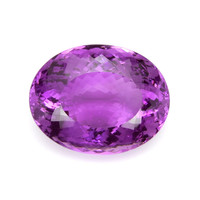Amethyst Pricing Chart
Amethyst, with its captivating purple hues, is one of the most popular and widely recognized gemstones. Its affordability, combined with its beauty, makes it a favorite choice for both jewelry lovers and collectors. However, the price of amethyst can vary significantly based on several key factors, as outlined in the Amethyst Pricing Chart. This Amethyst Pricing Chart provides valuable insights into how elements such as color, clarity, carat weight, and cut influence the cost of this beloved gemstone. By referring to the Amethyst Pricing Chart, buyers and collectors can make informed decisions when purchasing or investing in amethyst.

This blog will provide a detailed pricing chart and explain the elements that influence the value of amethyst gemstones.
Factors Influencing Amethyst Prices
Before diving into the pricing chart, it’s important to understand the factors that affect amethyst prices. These include color, clarity, cut, carat weight, origin, and treatments. Each of these factors plays a crucial role in determining the overall value of the gemstone.
1. Color
The most important factor in amethyst pricing is its color. The highest quality amethysts display a deep, rich purple color with secondary hues of red or blue. Stones with even color distribution and no zoning are the most valuable.
2. Clarity
Clarity refers to the presence of inclusions or internal flaws within the gemstone. Eye-clean amethysts, which have no visible inclusions, are more valuable. Minor inclusions that do not affect the stone’s beauty are acceptable in lower-priced amethysts.
3. Cut
The cut of an amethyst affects its brilliance and overall appearance. Well-cut stones that maximize the gem’s color and clarity are more valuable. Common cuts include oval, round, cushion, and emerald, with more intricate cuts commanding higher prices.
4. Carat Weight
Amethyst prices increase with carat weight, but larger stones must also maintain high color and clarity standards to be valuable. A smaller, high-quality amethyst can be more expensive than a larger, lower-quality stone.
5. Origin
The origin of an amethyst can impact its value. Amethysts from certain regions, such as Siberia, Uruguay, and Zambia, are known for their superior color and quality. Stones from these regions often command higher prices.
6. Treatments
Many amethysts undergo treatments, such as heat treatment, to enhance their color and clarity. Treated stones are generally less expensive than untreated stones of comparable quality. However, high-quality treated amethysts can still be quite valuable.
Amethyst Pricing Chart
The following chart provides a general guide to amethyst pricing based on color, clarity, cut, and carat weight. Prices are approximate and can vary based on market conditions and specific gemstone characteristics.
| Quality | Color | Clarity | Cut | Carat Weight | Price per Carat (USD) |
|---|---|---|---|---|---|
| AAA | Deep purple with red/blue flashes | Eye-clean | Excellent | 1-5 carats | $30 – $50 |
| AA | Rich purple | Eye-clean to slightly included | Very good | 1-5 carats | $20 – $30 |
| A | Light to medium purple | Slightly to moderately included | Good | 1-5 carats | $10 – $20 |
| B | Pale purple | Moderately to heavily included | Fair | 1-5 carats | $5 – $10 |
Tips for Buying Amethyst
- Check Certification: Always purchase amethyst from reputable dealers and look for certification from recognized gemological laboratories to ensure the stone’s quality and authenticity.
- Consider the Setting: The type of jewelry setting can affect the overall appearance of the amethyst. Choose a setting that complements the stone’s color and enhances its beauty.
- Balance Quality Factors: While color is the most important factor, don’t overlook clarity, cut, and carat weight. A well-balanced stone with high marks in all areas will be the most valuable.
- Stay Informed: Keep an eye on market trends and prices. The gemstone market can fluctuate, and being informed can help you make a smart investment.
Understanding the factors that influence amethyst pricing is essential for making informed purchasing decisions. By considering color, clarity, cut, carat weight, origin, and treatments, you can find an amethyst that suits both your taste and budget. Use the pricing chart as a general guide, but always consider the unique characteristics of each gemstone. Explore our collection of high-quality amethysts and discover the perfect gemstone for your needs. Whether you are buying for a special piece of jewelry or adding to your collection, our selection ensures you find the best value and beauty in every stone.
Please visit the link for more details about choosing the right Amethyst!
